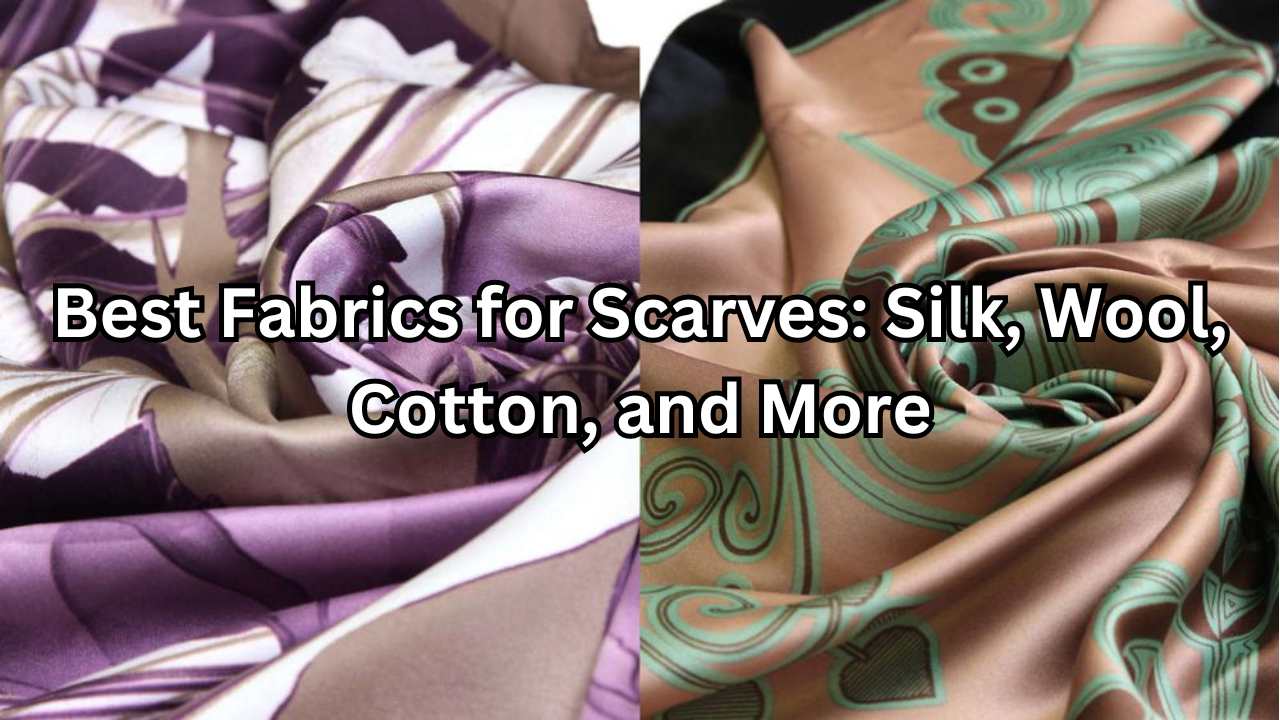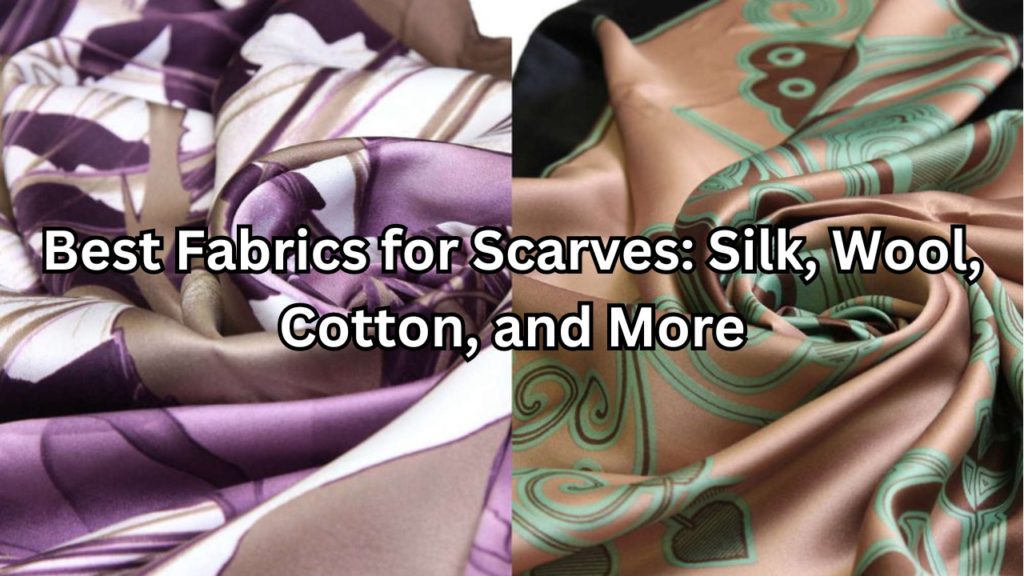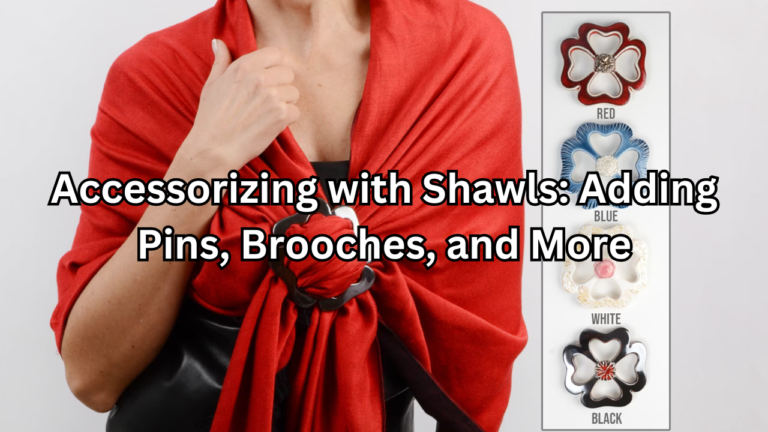

Table of Contents
Introduction
Fabrics for scarves are more than just a practical accessory; they are a cornerstone of fashion and function. Scarves offer versatility and style, whether draped elegantly around the neck, styled as a headwrap, or used to add a pop of color to an outfit. They can transform a simple ensemble into something extraordinary, making them a staple in wardrobes around the world.
The significance of selecting the right fabric for scarves cannot be overstated. Each fabric type brings its own characteristics that impact comfort and style. From the luxurious feel of silk to the cozy warmth of wool, the material you choose affects how a scarf performs in different weather conditions and how it complements your overall look. Understanding the properties of various fabrics helps you make informed choices, ensuring that your scarves not only enhance your fashion but also provide the comfort you need.
Choosing the perfect scarf fabric involves balancing aesthetic appeal with practical considerations, ensuring that your accessory not only looks good but also meets your lifestyle needs. In this guide, we’ll explore some of the most popular fabrics for scarves—silk, wool, cotton, and more—highlighting their unique benefits and helping you find the ideal material for any occasion.
Silk Fabrics for Scarves
Characteristics: Silk scarves are celebrated for their smooth texture, natural sheen, and lightweight feel. The fabric is derived from the cocoon of the silkworm and is known for its luxurious appearance and soft touch. The natural luster of silk adds a sophisticated, shimmering quality to any outfit, making it a favorite for those who appreciate elegance and refinement.
Pros:
- Luxurious Feel: The softness of silk against the skin is unmatched, offering a sensation of luxury and comfort. This makes silk scarves a pleasure to wear and a perfect accessory for those who value high-quality textiles.
- Drapes Well: Silk’s natural drape and fluidity allow it to flow gracefully, enhancing its versatility in styling. Whether worn loosely around the neck or tied in a chic knot, silk scarves maintain their elegant shape and add a touch of sophistication.
- Resists Wrinkles: One of silk’s practical advantages is its resistance to wrinkles. This quality ensures that silk scarves remain looking fresh and smooth, even after being packed away or worn throughout the day.
Cons:
- Requires Delicate Care: Silk is a delicate fabric that often demands special care. It can be prone to staining and may require hand washing or dry cleaning to preserve its quality and sheen. This need for gentle handling can be a drawback for those seeking low-maintenance accessories.
- Can Be Expensive: Due to its luxurious nature and the intricate process of production, silk scarves are often on the pricier side. Investing in a high-quality silk scarf is a worthwhile choice for those who are willing to pay a premium for elegance and durability.
Best For: Silk Seasonal scarves are ideal for formal occasions and mild weather. Their elegant appearance makes them a perfect choice for adding a touch of class to evening wear, business attire, or special events. Additionally, their lightweight nature makes them suitable for transitional seasons where warmth is not a primary concern but style is paramount.
Wool Fabrics for Scarves
Characteristics: Wool scarves are known for their warmth, textured surface, and durability. Made from the fleece of sheep or other animals, wool is a natural fiber celebrated for its insulating properties and resilience. The fabric often features a distinct texture that adds visual interest and depth to your scarf.
Pros:
- Excellent Insulation: Wool provides exceptional warmth, making it an ideal choice for cold weather. Its natural insulating properties help retain body heat, ensuring you stay comfortable during chilly days.
- Absorbs Moisture: Wool can absorb and wick away moisture from the skin, keeping you dry and warm even in damp conditions. This makes wool scarves practical for variable weather and outdoor activities.
- Naturally Resistant to Odors: Wool fibers have natural antibacterial properties that help resist odors, reducing the need for frequent washing and keeping your scarf fresh for longer.
Cons:
- Can Be Itchy for Some: Some individuals may find wool scarves itchy or scratchy against the skin. Choosing softer varieties like merino wool can help alleviate this issue, but it remains a consideration for those with sensitive skin.
- May Be Too Warm for Mild Weather: Wool is highly insulating, which may make it too warm for mild or transitional weather. It’s best suited for colder conditions where its warmth is most beneficial.
Best For: Wool scarves are perfect for cold weather and casual wear. Their insulating properties make them an excellent choice for winter outings, outdoor activities, or layering on chilly days.
Cotton Fabrics for Scarves
Characteristics: Cotton scarves are known for their softness, breathability, and versatility. Made from the fibers of the cotton plant, this fabric is a staple in casual fashion due to its comfort and ease of maintenance.
Pros:
- Easy to Care For: Cotton scarves are generally low-maintenance, often machine washable and durable enough to withstand frequent laundering. This convenience makes them a practical choice for everyday use.
- Affordable: Compared to other fabrics like silk or cashmere, cotton scarves are more budget-friendly, allowing you to build a varied collection without breaking the bank.
- Suitable for Various Climates: Cotton’s breathability and moisture-wicking properties make it a versatile option for different weather conditions, especially warmer climates where its lightweight nature provides comfort.
Cons:
- May Wrinkle Easily: Cotton is prone to wrinkling, which may require regular ironing or steaming to keep the scarf looking neat and polished.
- Not as Warm as Wool: Cotton scarves do not provide the same level of warmth as wool, making them less suitable for cold weather and better suited for milder conditions.
Best For: Cotton scarves are ideal for everyday wear and warmer climates. Their comfort and versatility make them perfect for casual outfits, summer styles, or as an additional layer in transitional weather.
Cashmere Scarves
Characteristics: Cashmere scarves are renowned for their ultra-soft feel, lightweight nature, and luxurious quality. Made from the fine undercoat of cashmere goats, this fabric is prized for its exceptional softness and warmth.
Pros:
- High Warmth-to-Weight Ratio: Cashmere provides significant warmth without being heavy or bulky. This makes it an excellent choice for staying warm while maintaining a sleek, lightweight profile.
- Feels Very Soft Against the Skin: The softness of cashmere is unparalleled, offering a sumptuous feel that enhances the overall wearing experience and adds a touch of luxury to your wardrobe.
Cons:
- Expensive: Cashmere is one of the most costly fabrics due to the labor-intensive process of harvesting and the high quality of the fibers. It is a premium investment for those seeking luxury and exceptional comfort.
- Requires Special Care: To maintain its quality and softness, cashmere requires careful handling, including gentle washing and proper storage. This attention to care is essential to preserve the fabric’s longevity and appearance.
Best For: Cashmere scarves are suited for high-end women fashion and cold weather. Their luxurious feel and exceptional warmth make them ideal for elegant outfits, special occasions, and winter wear.
Acrylic Fabrics for Scarves
Characteristics: Acrylic scarves are made from synthetic fibers that are lightweight and designed to mimic the qualities of natural fibers like wool. Acrylic is a popular choice due to its affordability and practicality.
Pros:
- Affordable: Acrylic scarves are generally less expensive than those made from natural fibers like wool or cashmere, making them an attractive option for those on a budget.
- Easy to Care For: Acrylic is durable and resistant to shrinking, stretching, and fading. It is typically machine washable and requires minimal maintenance, adding to its practicality.
- Colorfast: Acrylic retains its color well over time and does not fade easily, ensuring that your scarf remains vibrant and looking fresh.
Cons:
- Less Breathable: Acrylic is not as breathable as natural fibers, which can lead to overheating or discomfort in warmer conditions.
- Can Feel Less Luxurious: While functional, acrylic lacks the natural softness and high-end feel of fabrics like cashmere or silk, which may be a downside for those seeking a more luxurious accessory.
Best For: Acrylic scarves are ideal for budget-friendly options and casual wear. Their affordability and easy care make them suitable for everyday use and practical for various fashion needs.
Pashmina Fabrics for Scarves
Characteristics: Pashmina scarves are typically made from a blend of cashmere with silk or fine wool. The name “pashmina” refers to the high-quality fiber derived from the undercoat of Himalayan goats, known for its softness and warmth.
Pros:
- Soft: Pashmina scarves offer an exceptionally soft and luxurious feel, combining the softness of cashmere with the smoothness of silk.
- Warm: The blend provides excellent warmth while remaining lightweight, making it ideal for cooler weather.
- Versatile: Pashmina scarves are versatile enough to be worn in various styles and settings, from casual to formal.
Cons:
- Can Be Costly: High-quality pashmina scarves can be quite expensive due to the premium materials used. Prices may vary based on the blend and craftsmanship.
- Blends Can Vary in Quality: The quality of a pashmina scarf can differ depending on the proportions of cashmere and silk or wool used. It’s important to check the blend to ensure it meets your expectations.
Best For: Pashmina scarves are perfect for versatile wear and adding elegance to outfits. Their luxurious feel and warmth make them suitable for both everyday fashion and special occasions.
Linen Fabrics for Scarves
Characteristics: Linen scarves are crafted from fibers derived from the flax plant. Known for their crisp texture and breathability, linen is a popular choice for hot climates.
Pros:
- Excellent for Hot Weather: Linen’s breathability and moisture-wicking properties make it ideal for hot climates, helping to keep you cool and comfortable.
- Durable: Linen is a strong and durable fabric that can withstand frequent use and washing, making it a long-lasting accessory.
Cons:
- Wrinkles Easily: Linen is prone to wrinkling, which can require regular ironing or steaming to maintain a smooth appearance.
- Can Be Stiff: The texture of linen can be stiff and less pliable compared to other fabrics, which may affect its drape and comfort.
Best For: Linen scarves are best for hot climates and casual summer wear. Their lightweight and breathable nature makes them ideal for warm weather, adding a stylish touch to summer outfits.
Blended Fabrics for Scarves
Characteristics: Blended fabrics combine different types of fibers to create a textile that offers a mix of their properties. For example, blends might combine cotton with polyester or wool with cashmere.
Pros:
- Can Offer a Balance: Blended fabrics can provide a balance of comfort, durability, and cost by merging the desirable qualities of different fibers. For instance, a blend might combine the softness of cashmere with the durability of synthetic fibers.
- Customizable: Blends allow for customization to meet specific needs, such as improving wrinkle resistance or enhancing breathability.
Cons:
- Quality Varies: The quality of blended fabrics can vary depending on the specific combination and proportions of fibers used. It’s important to choose blends with a good reputation for quality to ensure the desired performance.
Best For: Blended fabrics are suitable for customizing to personal needs and preferences. They offer flexibility in creating scarves that balance different qualities, such as comfort, durability, and cost.
Conclusion
Fabrics for scarves, the choice of fabric can significantly influence both style and functionality. Each fabric offers distinct characteristics that cater to different needs and preferences:
- Silk Scarves: Known for their luxurious feel, natural sheen, and lightweight nature, silk scarves are ideal for formal occasions and mild weather. Their elegance and smooth texture make them perfect for adding a sophisticated touch to any outfit.
- Wool Scarves: With their excellent insulation, moisture absorption, and durability, wool scarves are best suited for cold weather and casual wear. Their warmth and practicality make them a staple for winter wardrobes.
- Cotton Scarves: Soft, breathable, and versatile, cotton scarves are great for everyday wear and warmer climates. Their affordability and ease of care make them a practical choice for casual outfits.
- Cashmere Scarves: Offering an ultra-soft feel and high warmth-to-weight ratio, cashmere scarves are perfect for high-end fashion and cold weather. Their luxurious nature justifies their higher price and special care requirements.
- Acrylic Scarves: As a synthetic alternative, acrylic scarves provide an affordable, easy-to-care-for option. They are well-suited for budget-conscious buyers seeking practical, casual accessories.
- Pashmina Scarves: Combining the softness of cashmere with the elegance of silk or fine wool, pashmina scarves offer warmth and versatility. They add a touch of sophistication and are ideal for various occasions.
- Linen Scarves: Crisp and breathable, linen scarves are excellent for hot climates and casual summer wear. Their durability and lightweight nature make them perfect for staying cool in warm weather.
- Blended Fabrics: Combining different fibers, blended fabrics offer customizable options that balance comfort, durability, and cost. They provide flexibility for those seeking specific qualities in their scarves.
When choosing the best scarf fabric, consider your personal needs and lifestyle. Think about the climate you live in, the occasions you’ll wear the scarf for, and your own comfort preferences. For formal events, opt for silk or pashmina. For everyday wear and warmer climates, cotton or linen might be your best bet. In cold weather, wool or cashmere will keep you warm and stylish. And for budget-friendly options, acrylic provides practicality without sacrificing style.
By understanding the unique properties of each fabric, you can select the right scarf that complements your wardrobe and integrates seamlessly with your daily equipments. Choose wisely to ensure your scarf is not only a stylish accessory but also a practical addition to your overall ensemble.





